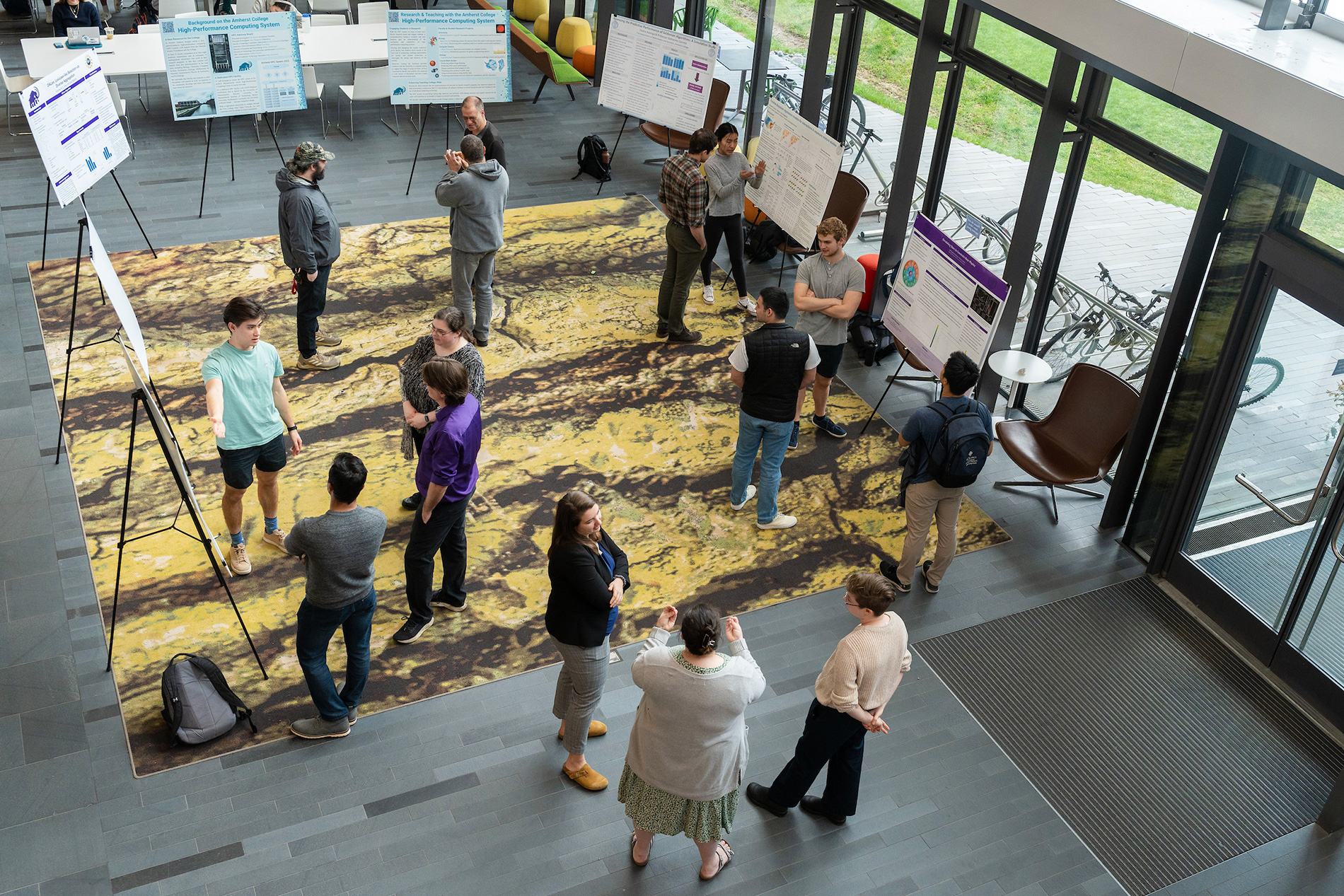The fact that FrostByte belongs to a small liberal arts college–rather than a large research institution–is notable, said Spector. “The computational prowess of this cluster far exceeds what was once considered high performance even just a few years ago,” he explained. “As a result, [FrostByte] has opened up new possibilities for research and exploration across a wide variety of disciplines, not just in STEM.”
He added that although only faculty members and students in computer science, math and statistics, physics and astronomy and geology have used FrostByte so far, he is excited for when scholars in the humanities and social sciences at Amherst take advantage of it as well.
The hardware unit itself–which is roughly the size of a large refrigerator–is located in the nearby Holyoke-based Massachusetts Green High-Performance Computing Center along with HPC clusters belonging to MIT, UMass, and Boston, Harvard and Northeastern universities. The largest aggregation of research computing power in the northeast, the MGHPCC operates in a LEED platinum-certified facility and uses 100 percent carbon-free power, noted Fred Kass, associate chief information officer, who took the lead in IT on the FrostByte project.
“Research computing consumes a lot of energy, but the MGHPCC makes it as sustainable as possible,” he said. And Amherst’s presence in the facility via FrostByte “puts us where synergies and conversations around sustainable computing are happening in the larger research community,” he added. “I’d love to collaborate more with [the MGHPCC institutions] and other schools, and we are working toward doing some of that already.”
Wagaman said some numbers illustrate how FrostByte has caught on at Amherst already: more than 200 students, 40 faculty members and multiple courses have used it since its creation. “We wanted to lower the barriers to using the cluster so that it is accessible to a wider audience–and we are starting to see that bear fruit.”
Such momentum was very much on display at the April 11 event. Daniella C. Bardalez Gagliuffi and Mia de los Reyes, both assistant professors of astronomy; Lillian Pentecost, assistant professor of computer science; and Andy Anderson, senior academic technology specialist in IT, and five students described work—on Coulomb crystals, lexicase-like selection and Seldonian algorithms, among other things—that was only possible because of FrostByte.
One presenter was statistics major Elizabeth Zhang ’24, who recently accepted a job as a health policy research assistant at the Center on Budget and Policy Priorities in Washington, D.C. Zhang’s research assessed the health effects of mixtures of chemical pollutants, and required the use of computationally intensive models that would have taken many weeks with even the most high-powered laptop. FrostByte did the work in seven days.
Zhang said she was glad for the experience of using FrostByte, given her rapidly approaching next life chapter. “Some of the data that I’m going to be working with next year are these large, national sets of numbers. Having experience with working with really big data and intensive models was really useful for me in advocating for technical skills that I’ve gained.”
Just as useful, though, are the many liberal arts skills she honed at Amherst that complement those technical ones, she said. “For example, one of the most important things is to be able to communicate science to a lay community. If I were at another institution, I might not have had as much leeway to explore or practice that. Amherst has really prepared me for the future in that respect, because we are in a world where factual evidence is so crucial.”
